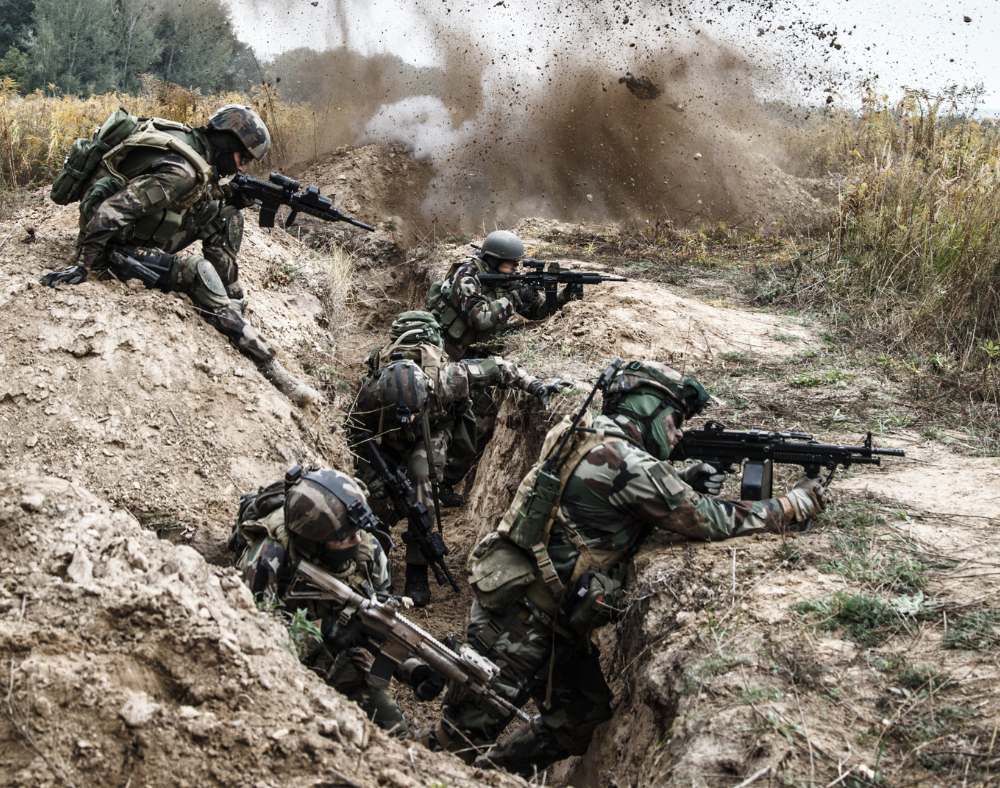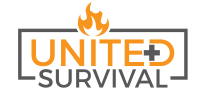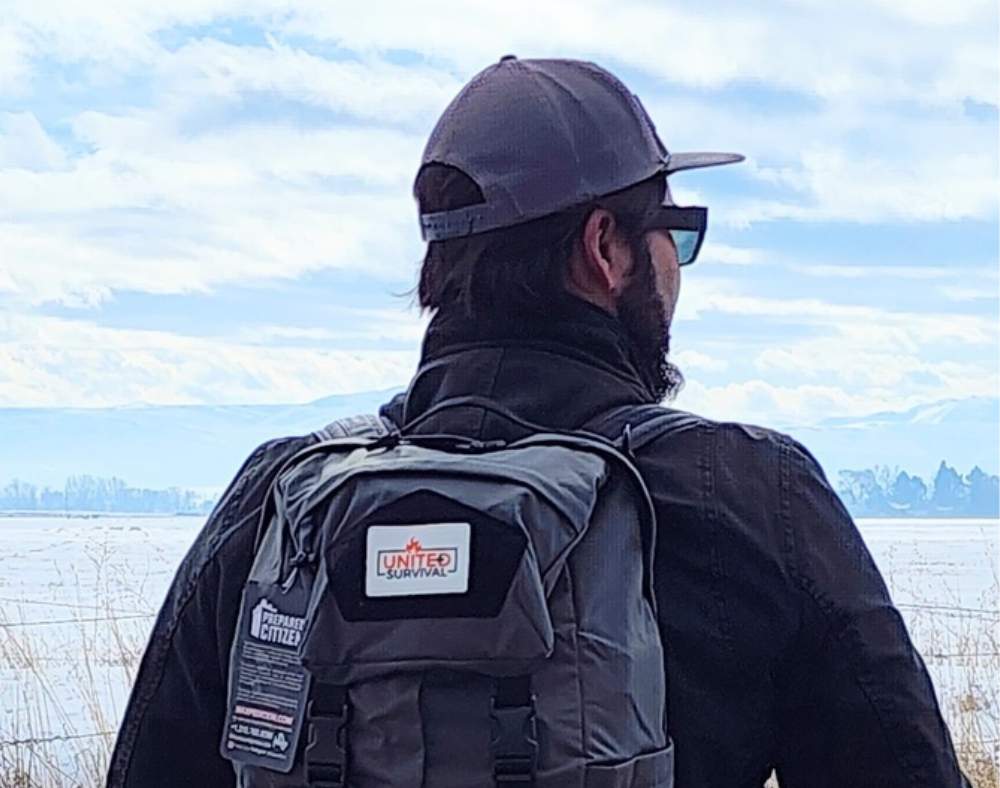As implied in the title, there is armed conflict occurring around the world. In relation to our preparedness, this affects us in countless ways. To name a few: availability of ammunition, reloading/handloading components, firearms parts, firearms, firearms accessories, body armor, medical supplies, countless imported goods from China and elsewhere overseas, food, clothing, car parts and fluids, tools,etc. That’s an extensive list and it’s only a small chunk. Let’s unpack that and get a handle on how it affects us and our preparedness in the US.

#1 Texas Border
The most recent event in the list could potentially be the most significant to us right now with Texas Gov. Abbot making a stand against the Biden Regime/Federal Government, and at least 27 states backing Texas (as of the date of this writing) including:
Governors Kay Ivey, Alabama, Mike Dunleavy, Alaska, Sarah Sanders, Arkansas, Ron DeSantis, Florida, Brian Kemp, Georgia, our very own Brad Little, Idaho, Eric Holcomb, Indiana, Kim Reynolds, Iowa, Jeff Landry, Louisiana, Tate Reeves, Mississippi, Mike Parson, Missouri, Greg Gianforte, Montana, Jim Pillen, Nebraska, Joe Lombardo, Nevada, Chris Sununu, New Hampshire, Doug Burgum, North Dakota, Mike DeWine, Ohio, Kevin Stitt, Oklahoma, Henry McMaster, South Carolina, Kristi Noem, South Dakota, Bill Lee, Tennessee, Spencer Cox, Utah, Glenn Youngkin, Virginia, Jim Justice, West Virginia, Mark Gordon, Wyoming, and more.
This backing includes governors sending armed personnel to Texas’ southern border, as well as various different law enforcement agencies, National Guard soldiers, and civilian groups. With at least half of the country’s governors, as noted above, aligning with Governor Abbot, most of us are asking, “civil war?” I know I am, so how does this affect our ability to prepare? If a kinetic civil war were to break out across the country, it would affect every single aspect of life as we know it. Trucking will certainly be affected, as well as availability of food at grocery stores, fuel being delivered, trains picking up/delivering products and raw materials, businesses being unable to operate without essential products and services, service companies unable to make repairs due to a lack of new parts, the electrical grid going down due to a lack of parts to make repairs/fuel for generation stations, first responders unable to go out on calls due to lack of fuel and communications… I could keep going, but you get the point. If that kinetic war kicks off, it’ll start a countdown from normal everyday life as we know it, to something we can’t even imagine. With this in mind, how can we best prepare ourselves and our loved ones?
Many of you have already taken some steps to be prepared, and that’s great! We will start out with basic food and water.
Basic Food
Think of your favorite recipes or things to eat, now find a way to stockpile those things/ingredients: canned food, freeze dried food, dry beans/rice, drink mixes i.e. Liquid IV/Gatorade powder, aluminum foil, paper plates, plastic silverware, disposable cups, etc. The best way to plan your food storage needs is to calculate how many calories you and your family need per day, and build your food storage around that number multiplied by however long you have decided to prepare for. We suggest starting with 1 month then 3 months then 6 months, then 1 year. It’s a lot of work and expensive, but we all need to eat.
Water
We all need water and a reliable source of it to survive. Your source depends on where you live.
City Water
If you live in a city you are very likely to be on the municipal water supply. This water supply is driven by electronic or hydraulic pumps to create water pressure in one way or another. The key thing is that, if there’s no electricity or replacement parts, that means no water. If the municipal supply is gone, where can you find water? Most likely, outside of the city unless it’s built around a natural water source like a river or lake. There are three ways to attack this problem.
Option 1: The easiest access to water is outside of the city, so you should move there. This is the most difficult option both financially and time consuming.
Option 2: Create a rain capture system. 55 gallon drums, a cistern, water jugs or whatever you can get. You can fill this system beforehand and have a large supply of water on hand. You can treat this water with unscented regular bleach with the correct ratio. This maintains the water’s fitness for consumption. According to the Center for Disease Control, ”Add 8 drops or a little less than 1/8 of a teaspoon of 5%-9% unscented household bleach to 1 gallon water. For cloudy tap water, use 16 drops or ¼ teaspoon. If you don’t have household bleach, chlorine dioxide tablets or iodine can be used according to label instructions. Boiling water is the best method.”1 Ideally you should have a water filter on hand. We recommend the Sawyer Mini. They’re relatively inexpensive at around $20 and have a lifespan of up to 250,000 gallons of water. Other options for something bigger would be Berkey filters. We have a large Berkey for our house and we love it. Filters fast and tastes great. To my knowledge they’re the only company that advertises that their product catches nuclear contamination.
Option 3: You can store a small amount of water and have a bug-out plan to get to a secondary location with easy access to water. This choice is a hard one to make as we all have extended family and friends to consider. You must make the best choice for you and your family – that’s the bottom line.
Rural Water
If you live in a rural setting you most likely have access to a well. Whether that is a private well or a shared one, you have the best access because it’s on or near your property. Most, if not all, wells today use an electric well pump to access the water supply underground. If there’s no electricity then the well won’t do you any good. You can purchase and install a manual well pump in addition to your electric one. Think of the old westerns and the old-timey hand pump well. That’s what we’re after. There is a bit of a financial barrier to entry for these bad boys. They can be a little pricey but are most certainly worth it. The hand pump comes in handy in everyday life in the event of a power outage or your well pump quits on you. You will still have access to water. We suggest having a plan in place to protect your resource as others will likely come to you for water.
#2 Global Conflicts
With the multiple global conflicts going, many are saying this is the beginning of World War III. They are most likely correct, in my opinion. Just because we are not directly involved and don’t have agreements with many nations on who stands on which side per conflict doesn’t mean that the entire world isn’t in some way in some state of conflict. The US is in a satellite war with Russia using Ukraine as a proxy for the US Military (and the military industrial complex). Hamas and Israel are at war with no end in sight. Once again the US is involved to some extent. China wants to take Taiwan, and the US has just responded to Iranian-backed militia groups by bombing them repeatedly.
Despite the horrendous loss of life, we need to look at how this affects us here in the US. More federal spending = more inflation and reduced buying power for your dollars, as well as the biggest concern of all, supply chains. We learned during Covid just how fragile our supply chains were. With global/domestic conflict going on, this will most certainly affect those very same supply chains. Availability will go down and prices will rise once again. What products will most likely be extremely expensive or unavailable? We know that there will not be a lack of toilet paper after covid, I think most people still have at least a metric ton or two.
Firearms, Firearms Parts/Accessories, Ammunition
Ammunition
With armed conflict happening 24/7 globally, the consumption of arms and ammunition is definitely going to impact global availability. Israel’s IDF and the US Military both use the 5.56MM NATO cartridge as well several other countries involved in conflicts. Typically, on the opposite side of these conflicts we see those groups using the 7.62 X 39 cartridge. The 5.56 and 7.62 X 39 cartridges are generally associated with the US M4/AR-15 and AK-47 weapon systems respectively. These two cartridges are ranked the second and third most popular cartridges according to Tactical Retailer3. Knowing that, we can assume that the civilian supply of these two cartridges is already in relatively short supply; that is currently reflected in the average price per round for each of the two cartridges. The current average price for Winchester 5.56 green tip (M855) is $0.70 per round (as of 2/8/24 on Palmetto State Armory’s website2). The current average price for 7.62 X 39 is somewhere between $0.45-$0.50 per round for steel cased 124 grain ammo according to Ammoseek.
Additionally, the Biden regime is recently going after civilian supply of 5.56 manufactured at the Lake City ammunition plant. If he is to succeed this will shrink availability of 5.56 even further. At this point you’re probably thinking I should buy some ammo, and you’re correct. A classic saying is, “The best time to buy ammo was yesterday, the second best time is today.” That always seems to be true. Now is the time to buy what you can when you can. Another cartridge definitely worth mentioning is 9mm, well known as the most popular pistol cartridge in the world. Currently, the average price for 9mm is still relatively cheap at around $0.26-$0.30 per round at the time of this article. The other side of loaded ammunition is ammunition components such as primers, smokeless powder, brass casings, and bullets. Whether you reload/handload or not those components almost never lose their value. They usually only go up. For example, I purchased 1000 CCI Large Pistol Primers in 2019 for $45. I purchased another 1000 of the same primers in 2023 for $110. In the reloading community, during covid, we had the “Great primer shortage” where you couldn’t find any primers anywhere for well over a year. Other components were also at times nearly impossible to source such as bullets, brass, reloading dies, shell plates/holders, and the biggest one aside from primers, smokeless powder. Smokeless powder and primer supply chains are still recovering and not fully intact. I would suggest getting some primers or powder even if you don’t reload due to their value in the future. Either bartering or selling, you should come out ahead.
Firearms
With global conflict, there is a need for weapons. Currently, most firearms manufacturers have done a great job with supplying civilians with all flavors of firearms; however, history has shown us that as soon as something big happens on the domestic or global stage, people go buy guns. To quote John Wick, “Guns, lots of guns.” That being said, that same classic saying of buying ammo applies to firearms.
What firearms should you buy? That is a gigantic question with way too many answers to cover here. We will be releasing a video on just that in late April- early May on our YouTube/Rumble/X channels – please keep your eye out for that.
Until that video drops, we suggest the classic three: pistol, rifle, and a shotgun. It’s a good place to start. We understand that firearms, ammo, and related accessories are all relatively expensive and it can be hard to fit preparedness into the budget. That being said, it is up to you to prepare yourself and your family. The unfortunate reality is, when shit eventually hits the fan, no one is coming to save you. Unless you have a preparedness group organized ahead of time, you and your family will be on your own in an every-man-for-himself world. Don’t get caught with your pants down.
Parts and Accessories
Parts
Another classic saying in the firearms community is, “A safety is a mechanical device that can break.” The keyword here is break. Everything breaks at some point and will need to be fixed or replaced. This is why it is a critical preparedness skill to learn how to work on/fix your own firearms and have common, quality replacement parts and the specialized tools on hand. Common consumable parts are going to be springs, detents, and extractors, and that goes for firearms in general. For the AR platform, your buffer spring that reciprocates the bolt only has so many cycles before the spring begins to shrink and lose its strength to send the bolt forward to load the next round. Similarly in pistols, most use a recoil spring; the spring compresses when the pistol is fired and releases and drives the slide forward to load the next round. Once again, the recoil spring only has so many cycles before it will quit on you. It’s a good idea to keep a rough estimate of the rounds you have fired from each firearm to help you keep track of the life of the springs and barrel. As for detents and extractors, they don’t necessarily have a set lifespan – they just wear out or break eventually. A good rule of thumb is to change the detent and spring if you change the grip on an AR-15, unless it’s relatively new. Another shameless plug – we sell an AR-15 Survival Kit from CMMG that contains most of your consumable items. The life of these parts varies from one manufacturer to another, so you should research the average life of parts for your particular make and model of firearm. Remember, you get what you pay for, and not all parts are created equally, so keep that in mind when purchasing replacement parts.
Accessories
Imagine that China invades Taiwan and the US defends Taiwan. It’s pretty safe to assume that China will cease trade with another country they are currently fighting. That means all accessories that are made in China would suddenly be unavailable. Things like electronic hearing protection, glasses, red dots, scopes, grips, magazines, weapon lights, flashlights, lasers, Infrared lights etc. If this were to happen these items would skyrocket in price and then be unavailable until another means of production could come to market which would likely take years. Just like we saw with the microchip shortage in 2021-22 I’m not saying everything accessories-wise is made in China; however, think of all the budget options like Holosun or Swampfox. Those would no longer be available for the foreseeable future. That leaves more expensive American made brands like Trijicon and Aimpoint, driving their prices up even higher. The best way to prepare for an accessory shortage would be to buy them while you can, plain and simple. Magazines for popular firearms would also be in short supply. For example, the Glock 19 is probably the most common pistol in America. If all of a sudden there’s a run on Glock magazines due to the global conflicts going on, those magazines could become very hard to come by. We offer a great selection of all types of accessories right here at United Survival. If you need something, chances are we’ve got what you need. In the Shop All page you can search through our thousands of items to find exactly what you need. If you don’t find what you’re looking for, shoot us an email and we’ll see if we can get it for you.
Medical Products
If a kinetic civil war does break out, a massive side effect is going to be a lack of medical care. In the worst case scenario with the power grid down, first responders would be flooded with requests for assistance without enough personnel, vehicles, fuel, materials, and communications. Again, as we saw during covid, when hospitals were overwhelmed and there are only so many trauma surgeons in the country/your local area, where does that leave you and your family? Once again, on your own with whatever skills and equipment you have prepared. In my opinion, medical supplies and equipment are the most underrated field in survival and preparedness, simply because it’s not as “sexy.” We need to change the way we think about that, and that is one of the many reasons United Survival exists. Stepping away from civil war for just a moment, as far as every day carry (EDC), the likelihood of needing medical supplies/equipment vs a firearm almost always leans towards medical. However, back to civil war, that balance shifts more evenly between the two when more bullets start flying.
What can I do to prepare for medical emergencies during SHTF? The first step we recommend is to buy medical supplies/kits. Shameless plug here, we sell those. We have a variety of medical/first aid kits right here at United Survival under the First Aid tab. However I will say this: if you don’t want to buy our kits, that’s totally fine, just buy some quality medical/first aid supplies from somewhere and learn how to use them. Also, keep on hand extras of all the common over-the-counter and prescription medication your household uses.
What kits do we recommend? The IFAK (Individual First Aid Kit) is a great place to start. Either the Standard IFAK or our Top Tier are great options per your training level and needs. If you’re looking for a bigger kit for the family we suggest the Walking Hospital. We will be releasing the Walking Hospital in late May- early June. The kit will serve as a multi person first aid/medical kit and will be available in Standard and Top Tier options. As far as medical education, we like the books Where There Is No Doctor and The Survival Medicine Handbook. Both of these books contain essential knowledge for everyday people on how to deal with common minor to severe injuries and illnesses. Another recommendation would be JASE Medical. They offer prescription medications for emergency preparedness. We use JASE ourselves and have nothing but great things to say about them, and we highly recommend their services. (As of the date of this article we do not receive any compensation from any other companies we mention aside from our own sales on our own website.) From personal experience, I can’t tell you how many times I’ve come across an accident on the back roads, witnessed teenagers do stupid teenager things and hurt themselves badly, suffered injuries myself; it’s never a bad idea to have an IFAK nearby.
Summary
This was a bit of a long one but, if you’ve made it this far, that means you’re committed to your preparedness. Good for you! It may seem daunting if you’re just starting out, but don’t get discouraged – everyone starts each journey with the first step. To wrap this up, we covered the current events/conflicts, how it relates to preparedness, and what we can do about it. You got this! If you feel overwhelmed or like you don’t got this and you need some help, reach out – we’re here to help, because United, we Survive.
“Where others can’t, you must.” – Travis Siewert,
Co-Owner/Lead Instructor, United Survival
1 https://www.cdc.gov/healthywater/emergency/pdf/make-water-safe-during-emergency-p.pdf
2 https://palmettostatearmory.com/winchester-m855-62-gr-fmj-5-56x45mm-ammunition-500-rounds-wm855500.html
3 https://www.tacretailer.com/rifles/9-top-selling-rifle-cartridges-of-all-time-maybe



